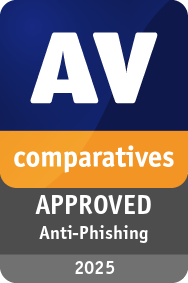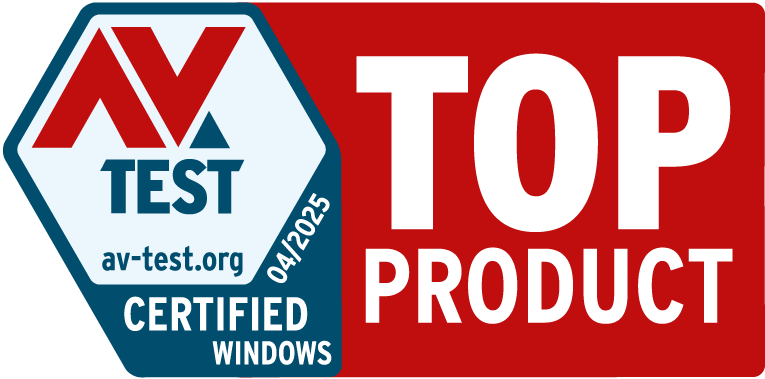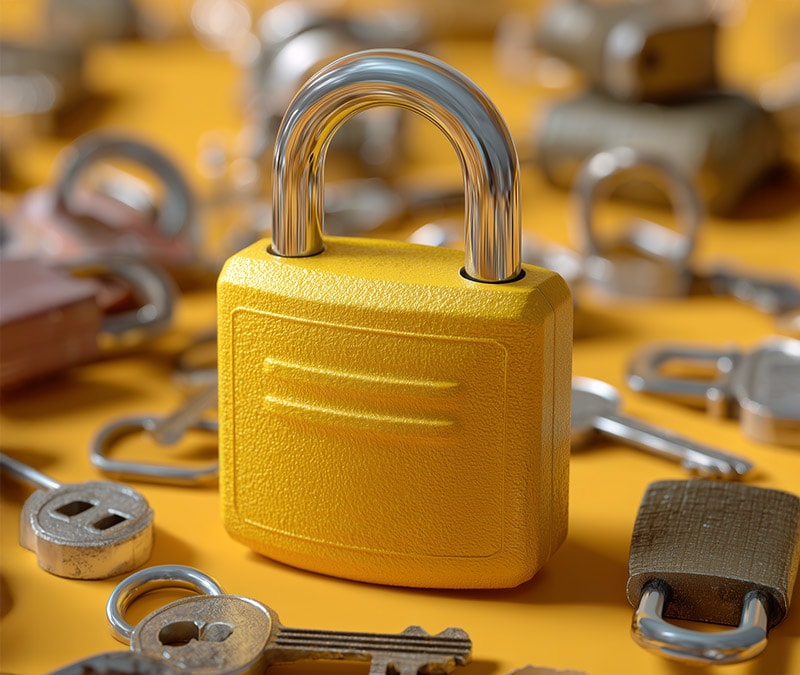Deep web vs. dark web: 7 key differences explained
The key difference between the deep web and the dark web lies in how you can access them. While deep web content is reachable through a standard browser, the dark web requires specialized software tools. Take a closer look at the differences between the two, and use Norton 360, with built-in VPN and AI-scam technology, to encrypt the data you send and receive online and help protect against scams.

Most of what you see in search results is just a small slice of the internet. In fact, only about 4% of the web is indexed, meaning it shows up in standard search engines. The rest hides below the surface on the deep web and dark web. But some of their secrets are better left hidden.
Keep reading to discover the differences between the deep web and dark web and what they mean for your online safety.
What is the deep web?
The deep web consists of internet content that’s accessible through standard web browsers, but can’t be indexed by search engines like Google or Bing. While hidden from public search, the deep web makes up the vast majority of the internet. This includes personal email accounts, online banking portals, cloud storage, subscription services, and medical records — essentially, any page behind a login, paywall, or restricted access.
What is the dark web?
The dark web is a concealed part of the internet that, like the deep web, isn’t indexed by search engines, but can only be accessed using Tor browser, or other specialized software that helps obscure your identity and location. Users often turn to the dark web for private communication, whistleblowing, or accessing restricted information in censored regions. However, it’s also notorious for hosting illegal activities, including illicit marketplaces and hacker forums.
What is the surface web?
The surface web includes all content indexed by search engines like Google. It’s the part of the internet most people use daily, including news sites, blogs, online stores, and social media. Unlike the deep or dark web, you can access it easily without special access or tools.


7 differences between the deep web and dark web
Knowing the differences between the deep web and dark web can help protect your online safety when and if you choose to access each. Major differences between the two include accessibility, purpose, security level, content type, user intent, and possible legal implications.
1. Accessibility
Accessing the deep web is simple, and you likely use it daily when logging into private accounts like Gmail, your bank account, or even streaming services like Netflix or Disney+.
On the other hand, accessing the dark web requires special software, most commonly Tor, which masks your identity and provides access to websites with .onion extensions. Surface web search engines do not index these sites, so you need the right tools to navigate safely and anonymously.
2. Purpose
The deep web offers a space for everyday tasks that require more privacy than a public website, such as checking your financial information or reading personal emails.
The dark web’s anonymity draws users who need private communication, want to share sensitive information, or seek access to content censored in certain regions. But while it can support legitimate uses such as whistleblowing or journalistic sources, it’s also a hub for illegal activity. Criminals use it to buy and sell stolen data, commit identity theft, or conduct illicit transactions.
3. Security level
Most deep web websites require login credentials, often with two-factor authentication, and use encryption to protect user information and keep transactions private. This means that the deep web is relatively secure.
On the other hand, the dark web relies on anonymity and encryption to function. While this makes it a popular choice for privacy-focused users, it also opens the door to hidden risks. Although Tor and similar tools offer another layer of protection, the dark web’s lack of regulation and hotbed of illegal activity can expose users to scams, malware, and other hidden threats.
4. Content type
The deep web hosts a variety of content necessary for everyday activities that require privacy and security, such as email accounts, subscription services, paywalled content, and private business databases. Most of the content is legal and designed to protect users’ sensitive information by keeping it secure behind databases and password-protected sites.
The dark web hosts both legal and illegal content, and experts estimate that about 57% of the dark web contains illicit material, including stolen credit card data, payment processing info, crypto account details, social media logins, and hacked service data. These illicit items can sell for anywhere from a few bucks to thousands of dollars.
Despite its reputation, many people use the dark web for legitimate purposes, such as secure communication for journalists, activists, and those seeking uncensored information.
5. Searchability
You can't access the deep web or dark web using standard search engines like Google, because neither is indexed. To access content on the deep web, you simply need the correct links and credentials, while the dark web requires specialized tools, like Tor.
Unlike traditional search engines, dark web search engines are limited, sometimes unreliable, and are subject to change often. Much of the content is intentionally hidden and accessible only through direct links or known dark web websites. This makes searching for specific content much more challenging, unless you know exactly where to look.
6. User intent
The deep web primarily serves everyday users managing routine, secure tasks. In contrast, the dark web generally attracts individuals seeking extreme privacy, such as journalists, whistleblowers, or those engaging in illegal activities. While the dark web does host criminal activity, it also supports uses like protecting free speech and getting around censorship barriers in oppressive regions.
For example, in 2016, investigative news outlet ProPublica launched a hidden version of its website on the dark web to provide a secure and anonymous way for readers to access its content. This initiative aimed to protect the privacy of individuals in repressive regimes or those concerned about surveillance, allowing them to read news without exposing their identity.
7. Legal implications
You can legally access the deep web, as it includes regular activities like checking email, managing bank accounts, or accessing subscription services — all of which require credentials but are entirely lawful.
The dark web is also legal to access, but it comes with serious risks. While there are legitimate uses, much of the content hosted there involves illegal activity, including drug trafficking, illicit imagery, and the sale of stolen data. Browsing without caution can expose you to this content, and even unintentionally engaging with it may result in legal consequences.
How to safely access the deep web
Accessing the deep web is likely already part of your daily routine. While it’s generally safe, following these cybersecurity best practices helps protect your personal information from hackers and online threats:
- Stick to trusted sources: Only access websites you recognize or those shared by reliable organizations.
- Use strong, unique passwords: Protect your accounts by creating complex passwords of 15 (or more) randomized letters and numbers. And be sure you don’t reuse them elsewhere.
- Keep your software updated: Regular updates help patch security vulnerabilities in your browser, apps, and devices.
- Use a reputable VPN: A VPN encrypts the data you send and receive while online and helps keep your browsing private.
- Avoid clicking on unknown links: Unfamiliar links may lead to phishing sites or malware.
- Do not share personal information: Avoid entering private details unless you know the site is legitimate and secure.
- Be cautious with downloads: Only download files from sources you trust to avoid phishing, hidden malware, or tracking software.
How to safely access the dark web
Accessing the dark web requires extra caution, as its anonymity and lack of regulation make it riskier than the surface or deep web. If you need to get on the dark web, use the following best practices to protect your personal information and reduce your risk of exposure to malicious, inappropriate, or illegal content:
- Download the Tor Browser: Use Tor to access .onion websites and browse anonymously. Tor routes your traffic through a network of volunteer-operated servers and nodes, encrypting your web data, and making it difficult for anyone to trace your activity or location back to you.
- Use a reliable VPN: A VPN encrypts your traffic and hides your IP address from potential surveillance. You can’t gain access to the dark web using a VPN alone, but if you’re an advanced user, you can use the VPN-over-Tor method to enhance your privacy.
- Avoid logging into personal accounts: Logging into email or banking sites can reveal your identity and defeat the purpose of dark web anonymity.
- Disable JavaScript in Tor: JavaScript can enable browser-based exploits, such as malicious code that tracks your activity or reveals your identity.
- Don’t download files from unknown sources: Files on the dark web can contain spyware, ransomware, or other malicious scripts designed to steal your information.
- Be extremely cautious: Some sites host illegal or harmful content, so avoid exploring out of curiosity. We recommend being more cautious than you think you need to be.
- Never share personal information: Keep your identity private to avoid scams and tracking. Use aliases that can’t easily be linked back to you or used against you in social engineering attacks after the fact.
Protect your personal information while browsing
For comprehensive protection against scammers, viruses, and ransomware across every layer of the internet, get Norton 360 Deluxe. As well as AI-powered protection against scam sites and messages, you’ll benefit from a built-in VPN and Dark Web Monitoring, which notifies you if your personal information — like your email address — is found on the dark web, so you can act fast and stay ahead of identity thieves.
FAQs
Which is bigger, the deep web or the dark web?
The deep web is significantly larger than the dark web. The deep web includes all unindexed content, such as private databases, email accounts, banking information, and any other site that requires logging in. In contrast, the dark web is a small, hidden part of the internet specifically designed for anonymity and often associated with illegal activities.
Is the deep web illegal?
No, the deep web is not illegal. It consists of private, secure, often password-protected, content requiring credentials or special access. Most activities on the deep web are legal and intended to protect user privacy.
Can police track you on the dark web?
Yes, police can track users on the dark web, but it’s challenging and resource-intensive, requiring advanced tools, undercover operations, and digital forensics to uncover illegal activity. So, while the dark web is designed for anonymity, it’s not impenetrable — mistakes by users, metadata leaks, compromised devices, or cooperation from hosting providers can all lead to exposure.
Is it okay to look at the dark web?
Depending on your activity, it can be okay to look at the dark web, but we recommend using extreme caution and researching exactly where you want to go before you start clicking around. While many people use it for legitimate purposes, the dark web also hosts illegal activities that you don’t want to stumble upon or engage with.
What are some examples of deep web websites?
Examples of deep web websites include:
- Email accounts
- Online banking platforms
- Medical record databases
- Academic databases
- Private subscription services
What are some examples of dark web websites?
Examples of dark web websites include:
- .onion websites
- Secure communication platforms and forums
- Whistleblower platforms, like SecureDrop
- Black markets, like the now-defunct Silk Road
- Censorship-free information
- Dark web versions of surface websites
Editorial note: Our articles provide educational information for you. Our offerings may not cover or protect against every type of crime, fraud, or threat we write about. Our goal is to increase awareness about Cyber Safety. Please review complete Terms during enrollment or setup. Remember that no one can prevent all identity theft or cybercrime, and that LifeLock does not monitor all transactions at all businesses. The Norton and LifeLock brands are part of Gen Digital Inc.









Want more?
Follow us for all the latest news, tips, and updates.